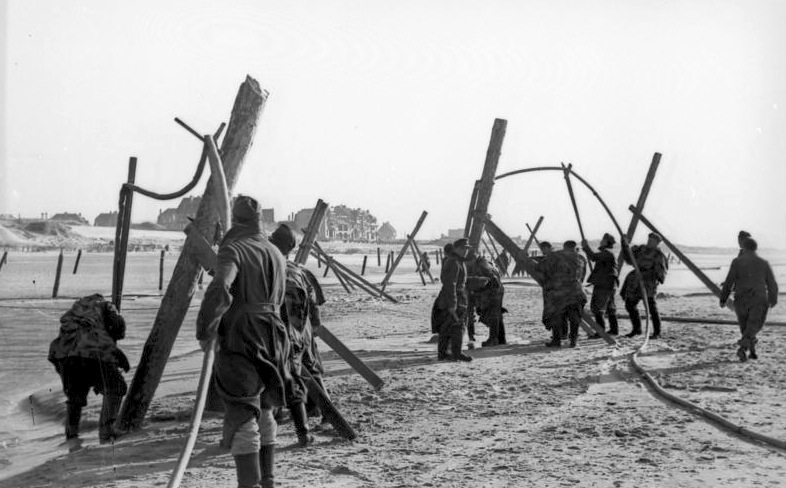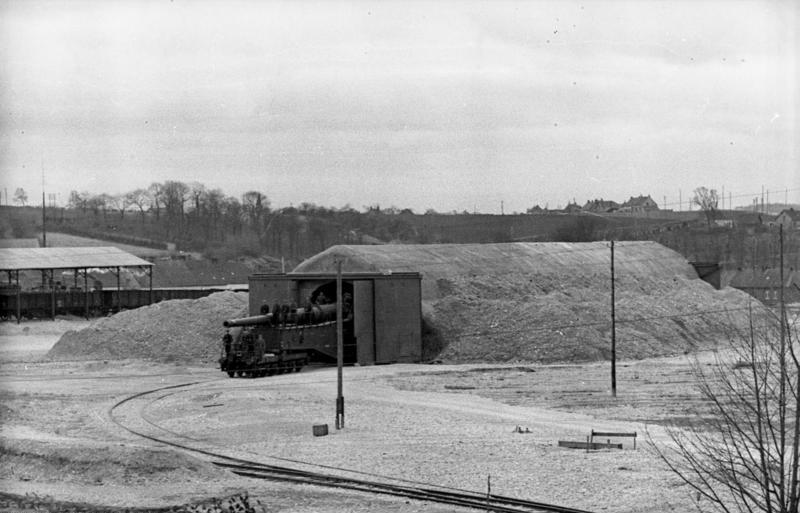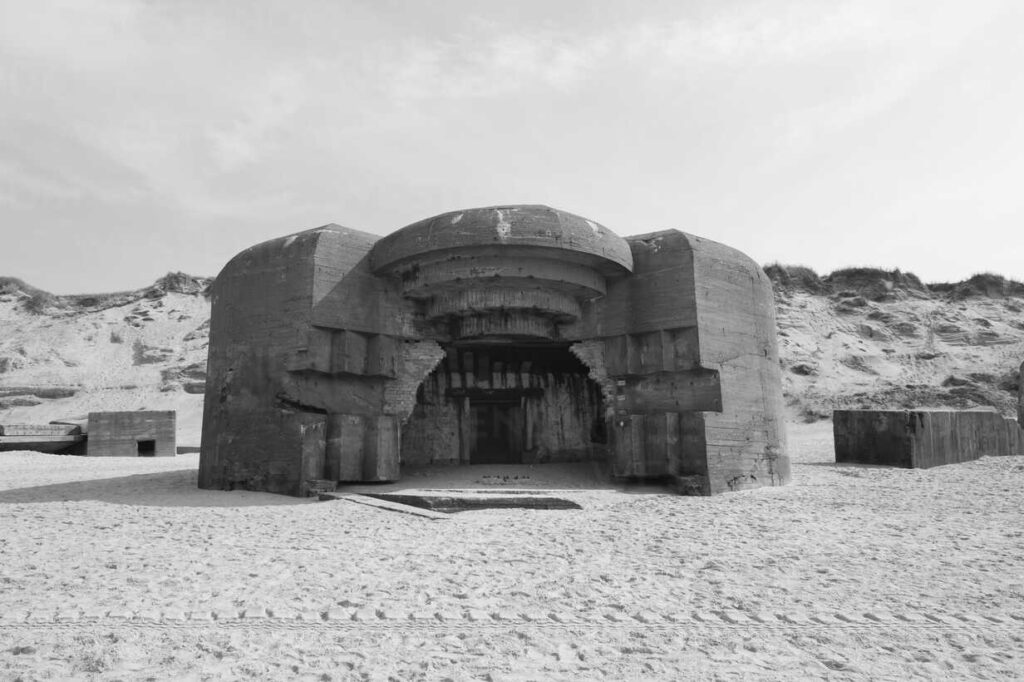The Atlantic Wall was a massive defensive line constructed by Nazi Germany along the western coast of Europe during World War II. The wall stretched from the Spanish border to the northernmost point of Norway, covering over 2,400 miles of coastline.

The wall was built to prevent an Allied invasion of Western Europe and to provide a line of defence that would make it difficult for the Allies to establish a beachhead on the continent and advance into Germany.
Construction
The construction of the Atlantic Wall began in 1942, under the direction of Field Marshal Erwin Rommel. Rommel was tasked with defending Western Europe from an Allied invasion.
The wall was built by a combination of German soldiers and forced labourers, including prisoners of war and civilian workers.
Over 600,000 people were involved in the construction of the wall. This was a massive undertaking that required the mobilization of significant resources.
The Atlantic Wall was made up of a series of bunkers, gun emplacements, minefields, and other obstacles designed to slow down an invading force.
The bunkers were constructed out of reinforced concrete and steel. Many were built into the natural terrain, using the landscape to provide additional protection.
The wall was heavily armed with machine guns, anti-tank guns, and artillery. Some of the bunkers were equipped with radar and other advanced technology for the time.
Erwin Rommel
Erwin Rommel was a German field marshal during World War II. He was widely known as the “Desert Fox” for his tactical genius in North Africa.
He was born on November 15, 1891, in Heidenheim, Germany. After attending military school, Rommel served in World War I and earned several decorations for bravery.
In World War II, Rommel was placed in charge of a unit responsible for guarding the Atlantic coast against an invasion.
This led to his involvement in the construction of the Atlantic Wall.
He later led the German Afrika Korps in North Africa, where he achieved a series of stunning victories against the British.
This earned him widespread admiration both inside and outside of Germany.
 Field Marshal Erwin Rommel visits Ostend in Belgium to see the coastal Atlantic Wall.
Field Marshal Erwin Rommel visits Ostend in Belgium to see the coastal Atlantic Wall.Rommel’s success in North Africa made him a hero in Germany and earned him the respect of Allied commanders.
However, he eventually fell out of favour with the Nazi leadership due to his refusal to carry out orders.
This included the execution of Jewish soldiers and civilians. Rommel was implicated in a plot to assassinate Adolf Hitler and was forced to commit suicide by taking poison in October 1944.
Rommel is often remembered as a brilliant tactician and military leader who was respected by both his own troops and his enemies.
He also wrote several books on military tactics.
He was known for his ability to improvise and adapt to changing situations on the battlefield.
While his legacy has been somewhat tarnished by his association with the Nazi regime, he is still regarded as one of the greatest military leaders of the 20th century.
Design
The wall was designed to be a formidable obstacle for any invading force. The obstacles included anti-tank obstacles, barbed wire, and minefields.
The Atlantic Wall also had a network of underground tunnels and bunkers that allowed troops to move safely between positions, and provided protection from air raids.
 German soldiers erecting anti landing craft poles. The idea was that the craft would tip over. Some had mines fitted to the end as well!
German soldiers erecting anti landing craft poles. The idea was that the craft would tip over. Some had mines fitted to the end as well!
The Atlantic Wall saw significant use during WW2, particularly in 1944 when the Allies launched the D-Day invasion of Normandy.
While the wall did not prevent the invasion, it did slow the Allies down and force them to divert resources to overcome the defences.
Guns Across the Channel
The wall also included a number of heavy artillery pieces that were capable of firing across the Channel.
These posed a threat to Allied shipping and the coast itself!
While it is true that German guns were able to fire on Dover, a strategic port on the southeast coast of England, their effectiveness in causing significant damage was limited.
The German guns were mostly located on the French coast, which was over 30 kilometres away from Dover.
In addition, the English Channel is a narrow body of water and the distance between the German guns and Dover meant that the accuracy of the shots was often poor.
 A Krupp K5 cannon on the Atlantic Wall. It would leave its bunker, fire on the English coast then retire again.
A Krupp K5 cannon on the Atlantic Wall. It would leave its bunker, fire on the English coast then retire again.
The most common German guns used to fire on Dover were 210mm and 240mm howitzers.
These guns were mounted on concrete emplacements, often camouflaged to avoid detection by Allied aircraft.
They were primarily used to attack shipping in the Channel, and to harass British coastal towns and military installations.
Despite their limited effectiveness, the German guns firing on Dover did cause some damage and casualties.
One notable attack occurred on September 24, 1940, when German artillery fired on Dover, causing damage to the town and killing several people.
However, as the war progressed, the effectiveness of the German guns diminished.
Allied air and naval superiority allowed them to launch constant attacks on the German defences, reducing their ability to effectively hit Allied targets.
A Hazard to Shipping
The Channel Guns were a key part of this defence system. They consisted of a series of large artillery pieces positioned along the English Channel to prevent Allied ships from landing troops or supplies on the European mainland.
 A German sentry in front of Batterie Todt in Cap Gris Nez, France. The site is now a museum.
A German sentry in front of Batterie Todt in Cap Gris Nez, France. The site is now a museum.
The guns were primarily located in bunkers and casemates, protected by thick walls of reinforced concrete and steel. The largest of these guns were the K5 railway guns.
They were mounted on railway carriages and could fire shells weighing over 1,000 kilograms up to a range of 64 kilometres.
The Germans also had a number of other artillery pieces positioned along the Channel coast.
These were often 155mm and 75mm guns. These guns were often mounted in casemates, which were heavily fortified bunkers designed to protect the gun and its crew from Allied air and naval attacks.
The Channel Guns were a formidable obstacle for the Allied forces during the D-Day invasion.
They had the potential to cause significant damage to ships attempting to land troops or supplies on the Normandy beaches.
However, the Allies were able to overcome this obstacle through a combination of tactics and technology.
Outwitting the Wall
The Allies used a variety of tactics to neutralise the Channel Guns, including air and naval bombardments.
They also used ground-based attacks by infantry and armour.
Specialised landing craft, such as the Higgins boat and the LCT were also used to minimise the risk of being hit by enemy fire while approaching the beach.
 Among the debris at Pointe du Hoc is a shattered German gun emplacement of the Atlantic Wall. It has been smashed by a Naval bombardment.
Among the debris at Pointe du Hoc is a shattered German gun emplacement of the Atlantic Wall. It has been smashed by a Naval bombardment.
In addition to these tactics, the Allies also used technology to help neutralise the Channel Guns.
One of the most effective technologies used by the Allies was the Mulberry harbours.
These were massive artificial harbours constructed off the coast of Normandy.
These harbours allowed the Allies to bring in supplies and reinforcements, without having to rely on vulnerable landing craft.
Today, many of the bunkers and casemates that housed the Channel Guns can still be seen along the coast of the English Channel.
D-Day
D-Day, the Allied invasion of Normandy on June 6, 1944, was a massive military operation that involved over 156,000 troops and over 5,000 ships and landing craft.
The operation was aimed at establishing a beachhead in Normandy, which would provide a foothold on the continent. From there the Allies could begin the liberation of Europe from Nazi Germany.
One of the greatest challenges facing the Allied forces during the D-Day invasion was the German beach obstacles that had been placed along the Normandy coast.
The Germans had constructed a variety of obstacles designed to stop or slow down the invading forces.
These included anti-tank obstacles, wooden stakes, barbed wire, and mines. This was all part of the Atlantic Wall.
To overcome these obstacles, the Allies employed a number of tactics and specialised equipment.
The Wall Tumbles
Specialised vehicles called “Hobart’s Funnies,” were designed to overcome the obstacles on the beach.
These vehicles included the Sherman Crab, which was a tank fitted with a flail that detonated mines as it moved forward.
The Churchill AVRE was another useful tank fitted with a large mortar that could demolish obstacles from a distance.
In addition to these specialised vehicles, the Allies also used amphibious tanks and landing craft that could navigate the shallow waters and soft sand of the Normandy beaches.
The tanks were equipped with flotation devices and could drive onto the beach and continue to engage enemy forces.
 An Atlantic Wall bunker lies in ruin at Lokken beach, Denmark
An Atlantic Wall bunker lies in ruin at Lokken beach, Denmark
Despite the German beach obstacles and the Atlantic Wall , the Allies were able to establish a foothold on the Normandy coast.
The success of the invasion was due in part to the courage and skill of the soldiers who landed on the beaches.
But also to the equipment and tactics that were employed to overcome the German defences.
Relics in the Sand
Today, many parts of the Atlantic Wall are still visible along the coasts of France, Belgium, the Netherlands, and Denmark. Some of the fortifications have been preserved as museums or monuments, while others have been partially or completely destroyed.
Likewise many of the beach obstacles from the D-Day invasion can still be seen along the Normandy coast.
These serve as a reminder of the challenges faced by the Allied forces during the operation.
Many of the obstacles have been left in place as a monument to the bravery of the soldiers who fought on D-Day.
They also remind future generations of the importance of remembering the sacrifices made during World War II.
The wall serves as a reminder of the horrors of World War II and the tremendous effort that went into constructing such a massive defensive line.





